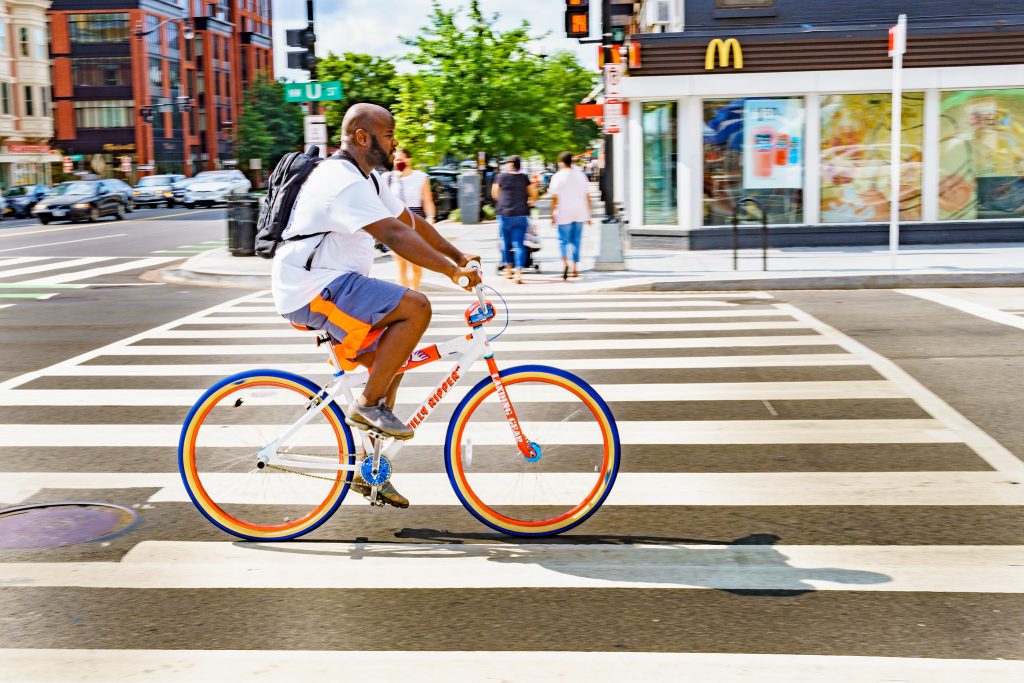Month of Action Week 4: A manual for safer streets
EDIT, Wednesday, May 12: The deadline to submit a comment supporting a rewrite of the MUTCD closes this Friday. We need you to submit a comment before then—it only takes one minute using the tool below!
The Federal Highway Administration has extended the comment period on the Manual for Uniform Traffic Control Devices (MUTCD), a document used by planners across the country for street design. We need you to submit a comment urging the FHWA to rewrite the MUTCD to put pedestrian and cyclist safety front and center.

It’s Week 4 of our Month of Action! Thank you if you took last week’s action to share the Congestion Con with your Senators.
For Week 4, we need you to tell the Federal Highway Administration to rewrite its guide to traffic safety.
The Manual on Uniform Traffic Control Devices (MUTCD) is a street design document used by planners across the country. Yet to date, the MUTCD has done little to help stem the approximately 40,000 traffic deaths the U.S. sees each year. This is due largely to the Manual’s overemphasis on designing for motor vehicle speed on rural highways, and failure to truly take into account all modes of travel in the places where people live and work.
The previous administration proposed tepid changes to the MUTCD that failed to fix its deeply flawed approach. We need you to submit a comment to show support for rewriting this document.
Submitting a comment to the Federal Register is easy. You can either download the template comment we co-wrote with NACTO here, personalize it as much or as little as you like, and submit your comment through Regulations.gov, OR, you can use this simple form below to quickly and easily send in your comment right from this page.
Don’t forget to customize your letter however you like and add in examples, your organization name (if any) to help your letter stand out from the rest.




















11 Comments